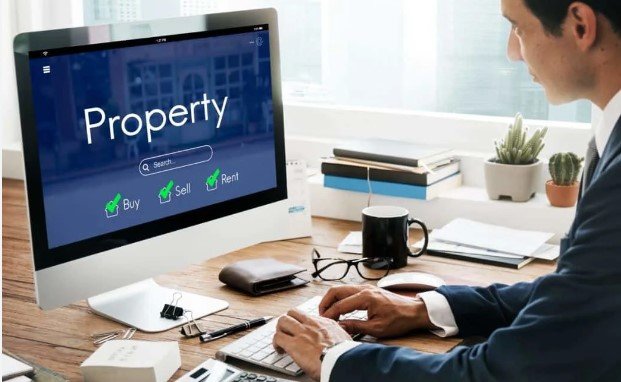Achieving Higher Occupancy Rates with Strategic Property Management

Achieving and maintaining high occupancy rates is not just a goal but a crucial aspect of successful property management. It ensures steady income, maximizes property value, and reduces the risk of financial instability. A strategic approach to property management can significantly impact occupancy rates, benefiting both property owners and managers alike. Here’s an extensive guide on how to achieve higher occupancy rates through effective property management strategies:
1. Market Analysis and Positioning
Understanding the local market is fundamental. Conduct thorough market research to identify trends, demand patterns, and competitor offerings. This analysis helps in positioning your property effectively:
- Identify Target Demographics: Determine the ideal tenant profile for your property based on location, amenities, and pricing.
- Competitive Analysis: Study similar properties in the area to benchmark pricing strategies, amenities offered, and leasing terms.
Benefits: By strategically positioning your property through market analysis, you can attract tenants who are aligned with your property’s offerings, leading to faster lease-ups and reduced vacancy rates.
2. Property Maintenance and Upkeep
Well-maintained properties not only attract but also retain tenants. Regular maintenance and upgrades enhance property value and contribute to tenant satisfaction:
- Preventive Maintenance: Implement a proactive maintenance schedule to address issues before they escalate.
- Curb Appeal: Enhance the exterior appearance to create a positive first impression for potential tenants.
Benefits: Investing in property maintenance not only improves tenant retention but also enhances property appeal, allowing you to command higher rental rates and attract quality tenants.
Read also: The Role of Property Managers in Ensuring Tenant Safety
3. Effective Marketing Strategies
A robust marketing strategy is essential for reaching prospective tenants and maintaining visibility in the market:
- Online Presence: Utilize property listing websites, social media platforms, and digital advertising to showcase your property.
- Professional Photography: High-quality images and virtual tours significantly enhance the appeal of your property online.
Benefits: Effective marketing increases exposure and attracts a larger pool of potential tenants, reducing vacancy periods and ensuring consistent rental income.
4. Tenant Screening and Retention
Selecting reliable tenants and fostering long-term relationships contribute to stable occupancy rates:
- Thorough Screening Process: Implement a rigorous screening process to evaluate prospective tenants’ credit history, rental history, and income stability.
- Tenant Engagement: Foster a positive tenant experience through responsive communication, timely maintenance, and community-building activities.
Benefits: Screening tenants rigorously reduces the risk of lease defaults and property damage, while tenant engagement improves satisfaction and encourages lease renewals.
5. Flexible Leasing Options
Offering flexible leasing terms can attract a broader range of tenants and reduce vacancy periods:
- Lease Renewal Incentives: Implement incentives for lease renewals, such as discounted rent or upgraded amenities.
- Short-Term Leasing: Consider offering short-term leases to accommodate tenants with temporary housing needs.
Benefits: Flexible leasing options cater to diverse tenant needs, enhancing tenant satisfaction and minimizing turnover, which leads to more stable occupancy rates.
6. Proactive Vacancy Management
Minimizing vacancy periods is crucial for maximizing revenue and operational efficiency:
- Early Renewal Offers: Anticipate lease expiration dates and proactively reach out to tenants with renewal options.
- Strategic Pricing: Adjust rental rates based on market trends and demand fluctuations to remain competitive.
Benefits: Proactively managing vacancies reduces income loss, maintains cash flow stability, and optimizes overall property profitability.
7. Data-Driven Decision Making
Utilize data analytics and performance metrics to optimize property management strategies:
- Occupancy Rate Monitoring: Regularly monitor occupancy rates and analyze trends to identify areas for improvement.
- Financial Analysis: Conduct thorough financial analysis to evaluate the profitability of leasing strategies and operational expenses.
Benefits: Data-driven insights enable informed decision-making, helping you adapt strategies to market conditions and maximize occupancy rates effectively.
8. Tenant Satisfaction and Feedback
Tenant satisfaction plays a pivotal role in tenant retention and referrals:
- Feedback Mechanisms: Implement feedback surveys and encourage open communication to address tenant concerns promptly.
- Amenities and Services: Continuously assess and enhance amenities and services based on tenant preferences and industry trends.
Benefits: High tenant satisfaction leads to lower turnover rates, reduced leasing costs, and positive word-of-mouth referrals, which attract new tenants and maintain high occupancy rates.
9. Compliance and Legal Considerations
Stay updated on local laws, regulations, and compliance requirements to avoid legal issues and penalties:
- Lease Agreements: Ensure lease agreements comply with local rental laws and regulations.
- Tenant Rights: Respect tenant rights and privacy while maintaining a professional landlord-tenant relationship.
Benefits: Compliance ensures operational integrity and protects against legal risks, maintaining trust with tenants and enhancing property reputation.
10. Community Engagement and Reputation Management
Build a positive reputation within the community to attract prospective tenants and enhance property value:
- Community Involvement: Participate in local events, support community initiatives, and build relationships with neighbors.
- Online Reviews: Monitor online reviews and respond promptly to tenant feedback to demonstrate responsiveness and commitment to tenant satisfaction.
Benefits: A strong community presence and positive reputation enhance property visibility, attract quality tenants, and contribute to long-term occupancy stability.
Frequently Asked Questions (FAQs)
How can property maintenance impact occupancy rates?
Regular maintenance enhances property appeal, attracting and retaining tenants who value well-kept living spaces. It reduces tenant turnover and vacancy periods.
Why is tenant screening important for maintaining high occupancy rates?
Thorough screening ensures that tenants are financially stable and reliable, reducing the risk of lease defaults and property damage, thus maintaining consistent occupancy.
How can flexible leasing options benefit occupancy rates?
Offering flexible lease terms accommodates a wider range of tenant preferences and needs, reducing vacancy periods and ensuring a steady flow of rental income.
What role does marketing play in achieving higher occupancy rates?
Effective marketing increases property visibility, attracts more prospective tenants, and reduces the time properties remain vacant, thereby optimizing occupancy rates.
How does data-driven decision making contribute to higher occupancy rates?
Analyzing occupancy trends and performance metrics helps property managers make informed decisions, adjusting strategies to optimize occupancy and rental income.
Why is tenant satisfaction crucial for maintaining high occupancy rates?
Satisfied tenants are more likely to renew leases and recommend the property to others, reducing turnover and ensuring stable occupancy levels over time.
What legal considerations should property managers keep in mind to maintain high occupancy rates?
Adhering to local rental laws and regulations ensures compliance, avoids legal disputes, and maintains positive relationships with tenants, supporting long-term occupancy stability.
How can community engagement enhance occupancy rates?
Building a positive reputation within the community attracts quality tenants and enhances property visibility, contributing to higher occupancy rates and tenant retention.
What are some effective strategies for proactive vacancy management?
Offering early lease renewal incentives and adjusting pricing strategies based on market demand can minimize vacancy periods and optimize property profitability.
How can property managers leverage technology to improve occupancy rates?
Utilizing property management software for tenant communication, lease tracking, and performance analytics streamlines operations, improves efficiency, and enhances tenant satisfaction.
Conclusion
Achieving higher occupancy rates requires a comprehensive and proactive approach to property management. By implementing strategic strategies tailored to market conditions, maintaining property quality, fostering tenant satisfaction, and staying compliant with legal requirements, property managers can optimize occupancy rates, enhance property value, and ensure sustainable financial performance. Investing in these strategies not only benefits property owners by ensuring consistent rental income and property value appreciation but also enriches the tenant experience, creating a win-win situation for all stakeholders involved in the rental property market.





